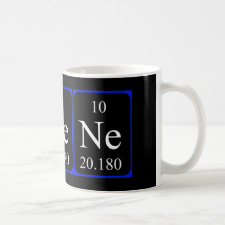
Authors: Tsai HA, Syu MJ
Article Title: Synthesis and characterization of creatinine imprinted poly(4-vinylpyridine-co-divinylbenzene) as a specific recognition receptor.
Publication date: 2005
Journal: Analytica Chimica Acta
Volume: 539
Issue: (1-2)
Page numbers: 107-116.
DOI: 10.1016/j.aca.2005.03.016
Alternative URL: http://www.sciencedirect.com/science/article/B6TF4-4FW7MDB-4/2/76b350da7d9b558c1cb591dc85689a8d
Abstract: In this study, molecularly imprinted poly(4-vinylpyridine-co-divinylbenzene) (poly(4-VP-co-DVB)) as the specific receptor of creatinine was prepared by heated polymerization. 4-Vinylpyridine (4-VP) was used as the functional monomer. Creatinine was used as the template and divinylbenzene (DVB) was the cross-linking agent. After polymerization, water was applied to remove the imprinted creatinine from the polymer. Approximately 72% of the imprinted creatinine template was extracted. Solid-state 13C NMR was used to analyze qualitatively the imprinting effect of the synthetic polymer. Adsorption results of creatinine by the imprinted poly(4-VP-co-DVB) and the corresponding non-imprinted polymer were compared. Maximum imprinting ratio of 4.56, defined as the maximum binding capacity of the MIP to that of non-MIP, was achieved. The adsorption kinetics could be precisely described by Langmuir isotherms. The kinetic parameters, Qm and Km, with the respective values of 11.95 mg/g and 0.11 dL/g were obtained. Imprinting ratio of the creatinine imprinted poly(4-VP-co-DVB) was also obtained. Selectivity factors of the imprinted poly(4-VP-co-DVB) defined as the binding of creatinine with respect to the other analogs ranging from 2.0 to 4.0 were obtained. The major detection interference of creatinine for clinical applications may come from creatine. Therefore, the creatinine/creatine binary competitive adsorption experiment was also carried out to evaluate the specific recognition ability of the polymer. The binding specificity of the imprinted poly(4-VP-co-DVB) toward creatinine was thus confirmed
Template and target information: creatine
Author keywords: Molecularly imprinted poly(4-vinylpyridine-co-divinylbenzene), creatinine, Solid-state 13C NMR, adsorption, Langmuir isotherms, creatine



Join the Society for Molecular Imprinting

New items RSS feed
Sign-up for e-mail updates:
Choose between receiving an occasional newsletter or more frequent e-mail alerts.
Click here to go to the sign-up page.
Is your name elemental or peptidic? Enter your name and find out by clicking either of the buttons below!
Other products you may like:
 MIPdatabase
MIPdatabase









